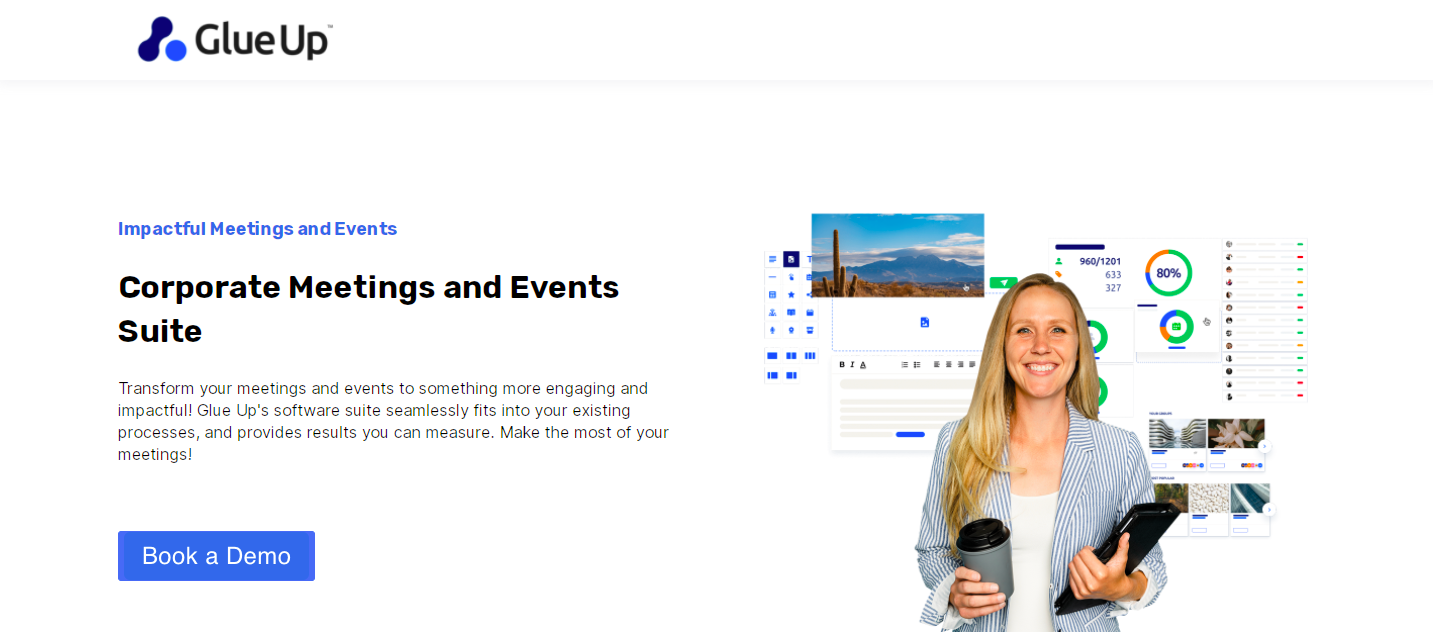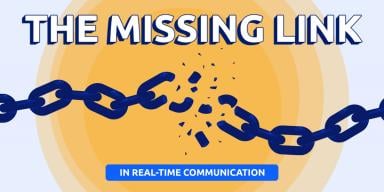
Business leaders today recognize the importance of creating Diversity, Equity, and Inclusion (DEI) programs to achieve success at work. In fact, 33% of executives revealed that their company focused its DEI initiatives on training.
If you want employees to have a strong sense of belonging, embracing DEI can positively impact their work satisfaction and engagement. In return, you can expect increased work productivity and employee retention.
In this article, you will learn more about DEI, its value, and how you can come up with related programs to foster innovation, productivity, and engagement in a hybrid workplace.
Quick Reads
- Defining DEI (Diversity, Equity, And Inclusion)
- Definition of Hybrid Workplace Model
- Why Companies Now Prefer Hybrid Workplace Model?
- 9 Step Process To Create A More Diverse, Equitable, And Inclusive Hybrid Workplace
Defining DEI (Diversity, Equity, And Inclusion)
Diversity
Diversity in the workplace refers to an organization's acceptance and inclusion of a workforce comprised of individuals with various characteristics, such as religion, race, gender, age, ethnicity, sexual orientation, education, and other attributes.
In addition, it deals with the appreciation of differences between individuals and valuing every attribute and characteristic.
Equity
Equity refers to avoiding biases and offering fair opportunities that support the growth of all employees based on their individual needs.
Inclusion
Inclusion creates a safe space for individuals to share their views and perspectives without fear of being judged.
Definition of Hybrid Workplace Model
A hybrid workplace model is designed to support teams in mixed environments. A team may work remotely part of the week and the remainder in the office.
Moreover, it generally allows employees to manage their time well, rather than structuring workaround fixed hours in the office. Many consider it an optimal balance of productive work with reduced stress and commuting time.
The COVID-19 pandemic forced a sudden shift in the way people work and proved to the skeptics that remote work could be productive. A recent study reveals that working from home increased productivity among 16,000 workers by 13% over nine months.
After a year of remote work, Microsoft surveyed 30,000 people and found that 70% expect flexible work from home options to continue as we enter the post-pandemic era.
Why Companies Now Prefer Hybrid Workplace Model?
A hybrid workplace supports a culture of wellbeing and encourages work-life balance. It offers learning opportunities to employees away from the normal work environment.
If they are working a portion of their week from the office, they can then utilize the remaining days for personal development while working from home. Since this is a flexible setup, it can improve work performance essential for career growth.
Unlike remote work, a hybrid work model encourages face-to-face communication. This is conducive to healthy team-building and collaboration, and in turn, improves communication in the DEI workplace.
Moreover, a hybrid workplace increases productivity and employee satisfaction. Employees feel more empowered to use their strengths, which can boost their productivity.
They also have the freedom to work in an environment that best suits their needs. Some may thrive working from the office, while others need a quiet and distraction-free workspace at home to be more productive.
9 Step Process To Create A More Diverse, Equitable, And Inclusive Hybrid Workplace
Step 1: Collect and Analyze Data

It is essential to know how you differ from other organizations in the industry. To increase awareness and accountability within your group, collecting data that covers diversity, equality, and inclusivity is the best way to go.
A human resources management system that automates traditional manual HR tasks stores most data like age, gender, employee history, skills, and many more. If you need to perform a personality assessment, you can develop a personality questionnaire to assess personal behavioral preferences.
Meanwhile, if you have to gather information on religion, gender identity expression, sexual orientation, and ethnicity, you can conduct a survey to team members.
Glue Up Surveys Solution can help you measure and understand employee feedback using surveys, polls, and quizzes for different audiences.
Who’s Spending More Time at the Office and Who’s Spending More Time at Home?
Many individuals prefer full-time remote work situations. But even given the chance to work from home permanently, some younger employees want to work in the office as well.
Whole Person Leadership

When it comes to inclusion, developing and implementing new policies are essential. Keep in mind that there are new ways of organizing, performing, and leading that should be practiced to succeed. This will require constant commitment to promote engagement and create a sense of belonging to every employee, partner, and customer.
Inclusive leadership is crucial for different departments and roles to help adapt to diverse customers, markets, ideas, and talent. In line with this, it will also require organizations some tools, support, and resources to identify unique qualities, avoid bias, respect differences, manage conflict, and build good working relationships.
Step 2: Identify the Problems and Offer Solutions
Data gathering using surveys and other systems can help analyze and understand organizational challenges that need to be addressed. Once you've identified them, you can schedule a meeting with stakeholders and come up with a solution.
For example, suppose there seems to be a gender imbalance and a lack of women's representation in the workplace. You can raise these concerns to the key decision-makers to encourage them to take a closer look at this situation.
After this, they can make plans to recruit more women who can potentially offer positive contributions in various roles.
Step 3: Evaluate Policies or Practices Affecting DE&I
Employers should offer employment opportunities to all individuals from different demographic groups. For this reason, they should reevaluate the effectiveness of existing policies to know if any of them must be improved or changed.
Company culture. Leverage online diversity calendars to keep employees informed about every religious, cultural, or racial holiday. Updating your staff makes it easier for them to appreciate differences. This practice will help shift DEI training from a lecture into a culture.
For example, do not limit company celebrations to an annual Christmas party as this can send the wrong message that only Christian employees are welcome.
Employers must plan for an annual holiday party instead and offer floating holidays that employees may choose for many religious observances.
Unconscious biases. Observe if there is underrepresentation in a particular department concerning labor. If the answer is yes, check if a manager has been holding biases against certain groups. When a department is less diverse, equitable, or inclusive than other departments, reviewing the DEI initiatives at work is necessary.
Employee referral programs. An employee referral program is an effective way to source new talents. However, it may create an imbalance in diversity hiring, primarily when employees refer candidates of the same race, religion, country, or other protected class.
To prevent discrimination lawsuits, it would be best if employers limit the use of employee referrals and consider other recruitment methods like employer review sites, inclusive job adverts, social media, and many more.
Political preferences. A survey from the Society for Human Resource Management reveals that 42% of U.S. employees say they have personally experienced political conflict at work. In comparison, 44% claim they have only witnessed it.
An employer with political signs or messages on any property might give a wrong impression or discourage individuals with different beliefs from joining an organization.
On the other hand, an employee's work machine with a sticker to support a political candidate can affect the manager's treatment and decisions regarding employee performance evaluation and promotion.
An employer should realize that political preferences may pose some disadvantages in the organization. Therefore, choosing to limit barriers by removing political messages in the workplace or encouraging everyone to respect different political views can neutralize it.
Appropriate disciplinary action should be considered if a manager, supervisor, or employee shows intolerance of differences.
Who Gets to Choose When to Be at the Office?
Employees are given the freedom to choose the days they work from home and when they come into the office.
Step 4: Identify Business Objectives

It is essential to develop business objectives to improve cooperation in the organization and strengthen relationships between managers and employers.
Remember that as an employer, you should identify how a diverse, equitable, and inclusive workforce can support these business objectives through specific goals related to DE&I.
If a company seeks to produce more valuable products, its initiatives should be geared towards innovation. For this reason, collaboration with the research and development team is a must.
Furthermore, training is a great way to build inclusive-decision making and encourage team diversity in the workplace.
Step 5: Get Buy-In & Support in Your Organization
Senior-level buy-in and support are vital for the DE&I initiative to be successful. Managers should be knowledgeable of the business case for DE&I initiatives connected to the company's strategic goals.
Moreover, assigning a senior-level manager who can monitor the initiative's progress can help track outputs systematically and measure a program's effectiveness.
Another aspect to consider is identifying how management will be held accountable for supporting and engaging in the DE&I initiatives.
Initiatives include:
- Training
- Hosting DE&I conversations for employees
- Holding everyone accountable for any action related to fostering a diverse, equitable, and inclusive workplace.
Step 6: Implement Systems and Build Initiatives
Set realistic goals before you create and implement initiatives and procedures. Evaluate existing programs and processes that may be posing some challenges to promoting diversity, equity, and inclusion.
Training programs for employees across the organization can increase their motivation and morale. DEI initiative examples are policy change and implementation, staff training, and targeted recruitment.
Here is an action plan sample:
Initiative
Promoting team diversity and generating diverse ideas will be beneficial for the organization to build R&D team cultural competence and inclusive decision-making.
Responsibly
SVP R&D, Director R&D
Action items
Team-building activities, competency immersion and training, and forum on diversity.
Timeframes
Cultural immersion and training: within 3 months; team-building activities: yearly staff retreat and meetings; forum on diversity: once a month.
Step 7: Discuss the Initiatives
Employers must consider stakeholders and produce relevant messages informing, educating, and engaging them.
Come up with stakeholders' communications that can be helpful if you have several stakeholders with different requirements.
An email broadcast is one of the most popular tools to communicate the message to stakeholders effectively. It can help you quickly customize content and immediately deliver information to the target audience.
You can also produce a weekly digest or a monthly newsletter to inform stakeholders about new products, highlight employees, share news, and announce upcoming events or promotions.
If you want to set attainable goals through strategic planning, you should use metrics and success stories connected to the DE&I efforts.
How Does Time in the Office Shape the Path to Promotion?
Employees should aim to get promoted around every three years. Moreover, a team member can either earn a promotion in six months or six years. Some career paths can offer promotion three times in three years.
Step 8: Measure and Disseminate Outcomes
Once you have implemented DE&I initiatives, analyzing the results should follow. Check if the identified groups are growing and measure employee survey scores.
You can also monitor public recognition and calculate employee turnover to check the progress and effectiveness of DE&I initiatives.
If DE&I training is designed to improve employee retention, conduct a survey to determine if training is a key factor. Inform all departments about the results of the initiatives. This can help everyone stay up to date when understanding the return on investment and value-add to the organization.
Step 9: Utilize Technology
Employees can now work from anywhere–remote, in-office, or both. But to thrive in the hybrid work environment, companies need to ensure everyone is connected and engaged.
You need to find a flexible digital workplace platform that can support remote work and video conferencing tools that can effectively bring employees together and improve communication in real-time.
How To Use Remote Management Tactics?
Managers utilize technology to host meetings, communicate with employees, and stay connected across different locations. This gives flexibility to their remote direct reports while still offering the chance to keep up with the day-to-day requirements of the team.
Do you want to effectively manage and improve communication in your hybrid workspace? Be sure to check out Glue Up’s Corporate Meetings and Events Suite.

With public & private groups, social media sharing and mentioning, plus a mobile app, the collaboration software is ideal for organizations that incorporate a mixture of in-office and remote work, especially when keeping team members connected and productive.
What’s more, its event management feature serves as your toolkit for both in-person and online events. It lets you easily customize an event page, automate the event registration process, create newsletters, and more.

![Advantages Of Paperless Board Meetings [+ Tips] Advantages Of Paperless Board Meetings [+ Tips]](/sites/default/files/styles/all_blogs_block_img_384x192/public/image_1578.png?itok=Ah-vnnvq)

![PayPal for Nonprofits: A Guide to Accepting Donations and Managing Your Money [with alternatives] PayPal for Nonprofits: A Guide to Accepting Donations and Managing Your Money [with alternatives]](/sites/default/files/styles/all_blogs_block_img_384x192/public/image_1807.png?itok=ujDAsFNj)